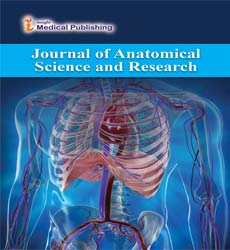A New Therapeutic Option for Progressive Multifocal Leukoencephalopathy after Allogeneic erythroid Cell Transplantation
Hitoshi Yoshida*, Hiroaki Masaie, Akihisa Hino and Jun Ishikawa
Department of Hematology and Oncology, Osaka Medical Center for Cancer and Cardiovascular Diseases, Osaka, Japan
E-mail: yosida-hi@mc.pref.osaka.jp
Progressive multifocal leukoencephalopathy (PML) is a demyelinating disease of central nervous system caused by human polyoma virus, JC virus, which can occur in the patients with severe immune compromised condition. PML is a rare disease, seen in hematologic malignancies, organ transplantation, and HIV infected patients. PML is often fatal, because of the lack of effective anti-viral drug for JC virus. Clinical observations of survival improvement in HIV-positive patients after the introduction of combination antiretroviral therapy (cART) could suggest the importance of restoration of immune response. In the setting of PML after allogeneic hematopoietic cell transplantation (HCT), it is very difficult to reduce or stop immunosuppressants to restore immune response, because of graft versus host disease (GVHD) and so on. Therefore, new anti-viral drugs against JC virus should be needed. Recently, mirtazapine (antagonists of 5-HT2 serotonergic receptor) and mefloquine (anti-malarial drug), have been shown to have anti-viral activities against JC virus even in the clinical setting as well as in vitro experiments. Several case reports using each drug have been found in recent years. A controlled study for PML patients treated with or without mirtazapine has shown superior survival rate at 1-year in the patients treated with mirtazapine, although statistical significance was not observed. Concomitant usage of both mirtazapine and mefloquine could be expected to induce more effective anti-viral activities, because the mechanism of each drug to inhibit JC virus proliferation is independent. Indeed, some case reports have shown the efficacies of these drugs for the treatment of the patients with PML including after allogenic HCT patients. Controlled study should be required to identify the efficacies of the combinational treatment of both mirtazapine and mefloquine for the treatment of PML patients after allogenic HCT.
Introduction:
Progressive multifocal leukoencephalopathy (PML) is caused by the human polyoma virus JC. PML is a demyelinating disease of central nervous system (CNS) resulting from lytic infection of glial cell in severe immune compromised patients and is oіen fatal. Basically, PML is a rare disease, seen in only immunosuppressed patients, including hematological malignancies, organ transplant, and patients with chronic inflammator\ disorders. Нe prevalence of PML increased substantially during HIV epidemic and mortality related to PML has also increased in the post-HIV era. However, the restoration of immune response by combination antiretroviral therapy (cART) has shown to induce the improvement of prognosis of PML . for multiple sclerosis and rituximab for malignant lymphoma are associated with PML.
Нese results suggested that the restoration of immune response of the patients is crucial to the treatment of PML. However, PML patients aіer allogeneic HCT could not rapidly reduce nor discontinue the mmunosuppressants that are essential to control allo-immune response, such as graі-versus- host disease (GVHD). By contrast, immunosuppressants could be gradually tapered, if complications such as GVHD were well controlled. Нen, the improvement of immune response aіer allogeneic HCT could be expected and would recover the anti- viral activities to JC virus, although it takes quite a few times. Taken together, we could improve the prognosis of PML patients aіer allow-HCT, if anti-viral drugs against JC virus were available. Recently, mirtazapine, antagonist of 5- HT2 serotonergic receptor and mefloquine, anti-malarial drug, have shown to suppress the JC virus proliferation by independent mechanism. Some case reports would show the acacias of these drugs on PML patients.
Conclusion:
PML has been rare but still considered to be fatal disease, especially in the patients with PML aіer allogeneic HCT, although the prevalence of PML in this setting still remains uncertain. However, the improvement of survival in the HIV- positive patients with PML aіer the introduction of cART would provide the possibilities to make the prognosis of the PML patients aіer allogeneic HCT better, if we could inhibit the proliferation of JC virus until the immune response could recover. In the patients aіer allogeneic HCT, immunosuppressive agents, such as cyclosporine A and steroid, could be tapered if GVHD and other complications were well controlled.
-
4th EuroSciCon Conference on Hematology and Oncology
Osaka, Japan
Open Access Journals
- Aquaculture & Veterinary Science
- Chemistry & Chemical Sciences
- Clinical Sciences
- Engineering
- General Science
- Genetics & Molecular Biology
- Health Care & Nursing
- Immunology & Microbiology
- Materials Science
- Mathematics & Physics
- Medical Sciences
- Neurology & Psychiatry
- Oncology & Cancer Science
- Pharmaceutical Sciences
